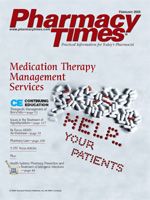Publication
Article
Pharmacy Times
Waterless Hand Cleansers: Good or Bad?
Emphasis on frequent hand washing is a familiar campaign: anyone with patient contact has been lectured on the importance of proper hand cleansing to prevent the transmission of infection from one patient to another. For health care practitioners with less time and more germs on their hands, the introduction of waterless antiseptic cleansers offers a quick cleansing compromise. Yet, are these cleansers as effective as an old-fashioned soap-and-water scrub?
The alcohol content of the waterless antiseptic plays an important role in its efficacy. An 85% ethanol formulation is recommended for its bactericidal, virucidal, fungicidal, and tuberculocidal properties. Practitioners should check the ethanol concentration before applying the product?standard gels contain only 53% to 70% alcohol. Most solution formulations contain an adequate alcohol concentration for antimicrobial action; conversely, most gel formulations do not. Health care providers should read the label before assuming that their cleanser is effective. The application duration is critical to its efficacy. A cleanser of appropriate strength will not be effective if it is not given enough time to work. Most waterless cleansers require at least 30 seconds of uninterrupted contact to be effective.
Lastly, remind providers that skin care products such as moisturizers or lotions may counteract the antimicrobial effect of the waterless antiseptic cleanser when they are used concurrently. Healthy skin is important. Dry skin can be more difficult to disinfect, and chronic dermatitis can provide a cozy environment for bacteria. To maintain the skin's integrity, skin care routines should be carried out during breaks or nonworking times.







